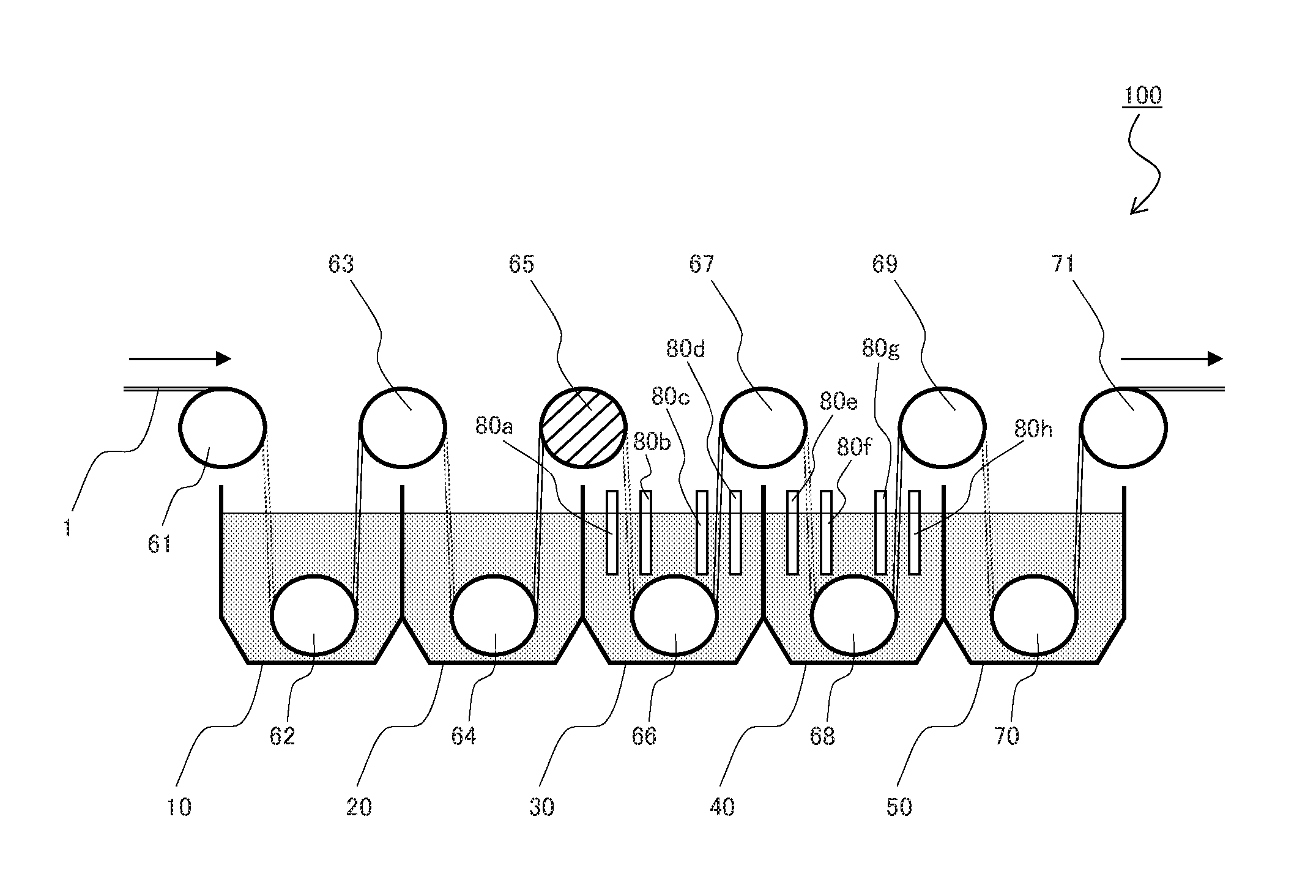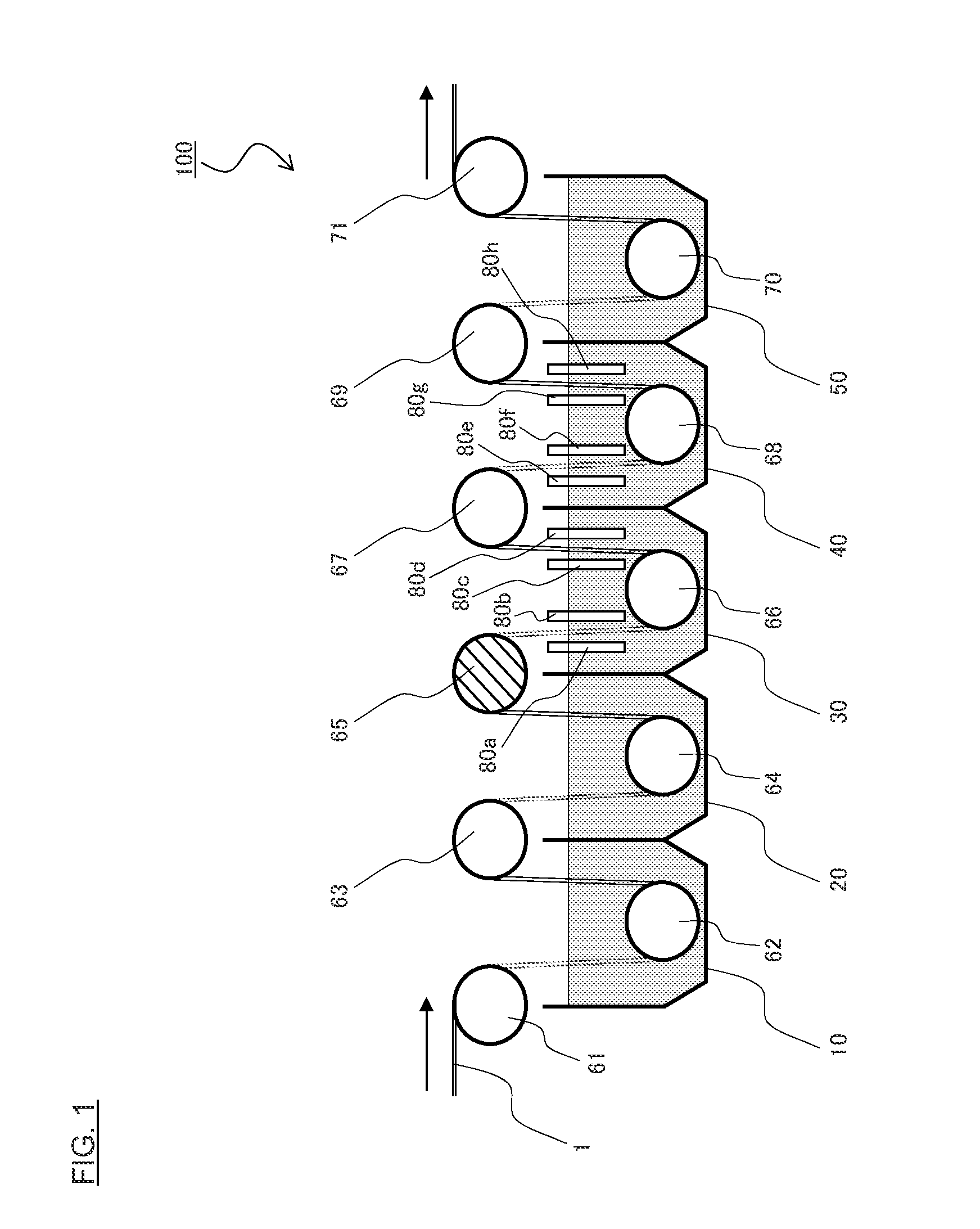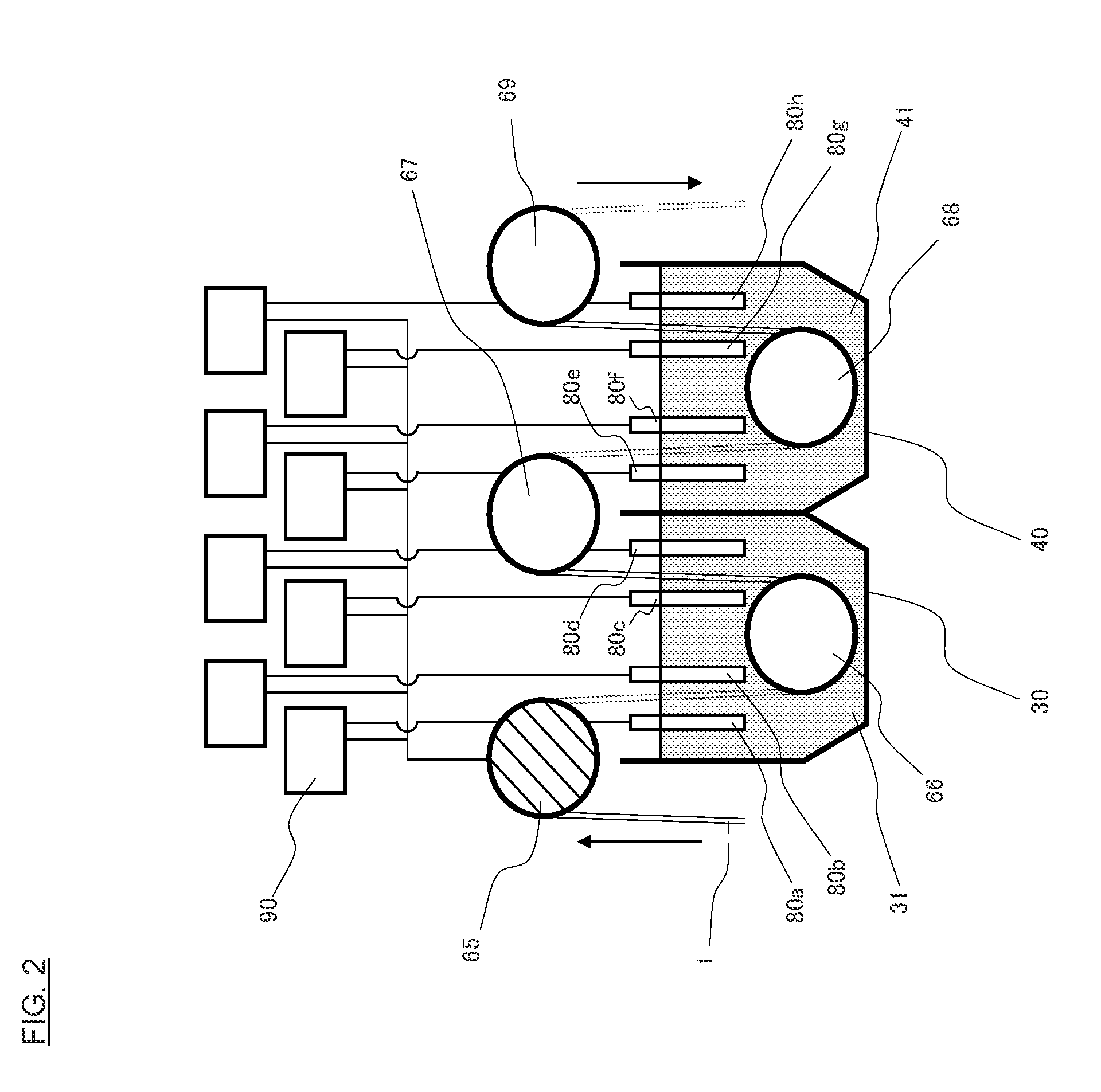Method of producing surface-treated steel sheet
- Summary
- Abstract
- Description
- Claims
- Application Information
AI Technical Summary
Benefits of technology
Problems solved by technology
Method used
Image
Examples
example 1
[0105]A cold-rolled steel sheet (thickness of 0.2 mm and width of 200 mm) was prepared as a raw sheet.
[0106]The prepared steel sheet was electrolytically degreased and then washed with water, and thereafter the surface treatment apparatus 100 illustrated in FIG. 6 was used to perform cathode electrolytic treatment. In the cathode electrolytic treatment, pretreatment was first performed such that: the steel sheet was fed by the carrier roll 61 into the acid pickleing treatment bath 10 filled with sulfuric acid; the steel sheet was pickleed by the sulfuric acid in the acid pickleing treatment bath 10; the steel sheet was then fed out of the acid pickleing treatment bath 10 and fed into the acid pickleing liquid rinsing treatment bath 20 filled with water by the carrier roll 63; and the steel sheet was washed with the water in the acid pickleing liquid rinsing treatment bath 20. Subsequently, the steel sheet was fed by the carrier roll 65 (first roll) into the first electrolytic treatm...
examples 2 and 3
[0124]Surface-treated steel sheets were obtained and evaluated in the same manner as in Example 1 except that the conditions of the total quantity of electricity flowing through the steel sheet and the magnitude of current to the carrier roll 65 (first roll) were changed to those listed in Table 1 when performing the electrolytic treatment for the steel sheet. Results are listed in Table 1.
example 4
[0125]In Example 4, the surface treatment apparatus 100 illustrated in FIG. 1 and FIG. 2 was used to prepare a surface-treated steel sheet. In Example 4, the same electrolytic treatment liquid as in Example 1 was used as each of the electrolytic treatment liquids 31 and 41 in the first electrolytic treatment bath 30 and the second electrolytic treatment bath 40. In Examples 4 to 6, the electrolytic treatment was also performed while circulating the electrolytic treatment liquids 31 and 41.
[0126]The electrolytic treatment in Example 4 was performed in the first electrolytic treatment bath 30 and the second electrolytic treatment bath 40 to form the metal-oxygen compound layers on the steel sheet under the conditions of: a manufacturing line speed (feeding speed of steel sheet) of 10 m / min; a cycle number of 4; an energizing time for 1 cycle of 1.2 seconds; a total quantity of electricity flowing through the steel sheet of 17 C / dm2; and a magnitude of the current to the carrier roll 6...
PUM
| Property | Measurement | Unit |
|---|---|---|
| Thickness | aaaaa | aaaaa |
| Electrical resistance | aaaaa | aaaaa |
Abstract
Description
Claims
Application Information
 Login to view more
Login to view more - R&D Engineer
- R&D Manager
- IP Professional
- Industry Leading Data Capabilities
- Powerful AI technology
- Patent DNA Extraction
Browse by: Latest US Patents, China's latest patents, Technical Efficacy Thesaurus, Application Domain, Technology Topic.
© 2024 PatSnap. All rights reserved.Legal|Privacy policy|Modern Slavery Act Transparency Statement|Sitemap



